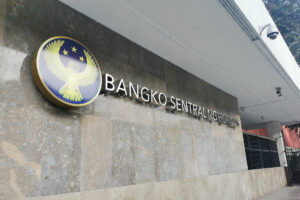




Philippines Trade Update: Trade trajectories trend along
 DOWNLOAD
DOWNLOAD

Policy Rate Updates: Double cut finale
 DOWNLOAD
DOWNLOAD

Monthly Economic Update: One for the road
 DOWNLOAD
DOWNLOAD


BSP creates overnight reference rate

The Bangko Sentral ng Pilipinas (BSP) has created a new overnight rate (ON) as reference rate amid the phaseout of the London Interbank Offered Rate (LIBOR), which will expire on June 30, its chief said on Wednesday.
In a chat with reporters, BSP Governor Felipe M. Medalla said the central bank is targeting to have a credible yield curve as an overnight rate by January 2024.
In the meantime, the new reference rate will be based on the 28-day BSP bill rate for six months.
“The market agreed with the proposal of the BSP that creates an overnight rate, which can be used as reference for various transactions,” Mr. Medalla said.
“This ON rate will be generated by translating the 28-day BSP bill rate to its ON equivalent. This new ON reference will be effective on or before June 30, 2023, thus addressing the global deadline on the cessation of LIBOR,” he said.
The United Kingdom’s Financial Conduct Authority and the International Exchange Benchmark Administration, the administrator of LIBOR, earlier said it would stop publishing rates for overnight, one-month, three-month, six-month and 12-month tenors by June 30.
Some LIBOR rates also stopped being published after December 31, 2021.
LIBOR is being phased out as a reference rate after it was manipulated before and during the 2008 financial crisis.
According to Mr. Medalla, the BSP discussed with market participants the urgency of having a credible yield curve.
“Since macro-financial decisions are based on these benchmark risk prices, having a credible yield curve is in everyone’s best interest,” he said.
“From the BSP’s standpoint, we believe that a credible yield curve must arise from active trading of marketable securities, provide yields for various tenors, make these yields usable to all parties, and can be replicated as needed,” he added.
In the Philippines, the LIBOR is still used for some fixed-income securities available in the market, as well as for interest rate and cross-currency swaps.
The Philippine Interbank Reference Rate (PHIREF), which is used for interest rate swaps, cross-currency swaps and some peso corporate loans, is also computed using dollar LIBOR.
“Making changes to the current benchmark or introducing a new yield curve will require time and the full cooperation of all the stakeholders,” Mr. Medalla said.
“While there are several tasks that need to be undertaken, it was agreed at the end of the town hall discussion that the start of January 2024 will be our ‘fighting target’ to have a credible yield curve in place,” he added.
In 2020, the central bank issued BSP Memorandum No. M-2020-083, which required financial institutions to report their LIBOR-related exposures.
The central bank wanted proper identification of exposures to ensure that the cessation of LIBOR does not disrupt banks’operations.
Rizal Commercial Banking Corp. Chief Economist Michael L. Ricafort said the new measure from the central bank would result in a more credible yield curve.
“The ideal is to have a more dynamic overnight (one-day) interest rate that moves real-time or everyday as against the key overnight BSP rate static at 6.25%,” Mr. Ricafort said, adding that this is also appropriate amid the phaseout of LIBOR to cure defects.
The current benchmark interest rate stands at 6.25% after the Monetary Board hiked borrowing costs by 425 basis points from May last year to March 2023.
The Monetary Board only meets about every six weeks to discuss the country’s policy settings.
Mr. Ricafort said the move would create “a more credible benchmark in the market on the real cost of funds based on market forces on a daily basis,” which he said would result in “a more credible yield curve.”
He added that the new reference rate would be similar to “formalizing the interbank call loan rate with spreads based on the key BSP overnight rates for many years or decades.”
The interbank call loan rate is the interest charged on short-term loans made between financial institutions. It may also refer to the foreign exchange rates paid by banks when they trade currencies with other lenders. — Keisha B. Ta-asan, Reporter
This article originally appeared on bworldonline.com





 By BusinessWorld
By BusinessWorld